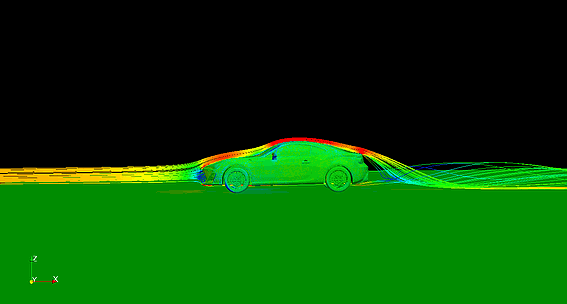We have done some CFD work for the FR-S to get a baseline result. The model does have a flat floor, so the coefficients are not 100% representative

The results show the coefficient of drag is 0.262, close the OEM rating of 0.29. Using the theoretical data from the smoothed underside, the coefficient of drag we calculated is valid. The coefficient of lift is .179, meaning the car does generate lift in its stock form.
[1] Buchhiem, R., Leie, B., Luckoff, H-J., “Der neue Audi-100-Ein Beispiel fur konsequente aerodynamishce Personenwagen-Entwicklung,” ATZ, Vol. 85, 1983, pp419-425.
FR-S Initial CFD Case